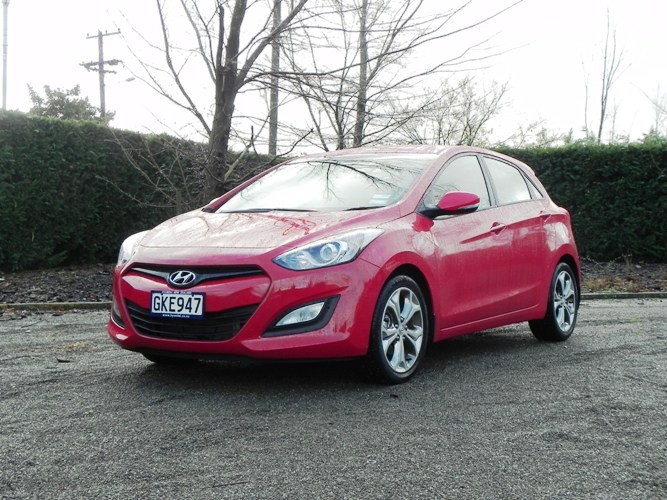
Car reviews
Read our expert car reviews - where we give insight into the latest vehicles to hit our roads.
19 July 2012
The 2012 i30 is set to shake up the small hatchback segment with its modern, eye catching looks. The previous 1.6 litre and 2.0 litre petrol engines have been dropped to make way for a midsized 1.8L, while the 1.6L diesel has been retained.

Hyundai have moved away from traditional Korean styling lines and now rely on a European design team based in Russelsheim Germany to produce the goods. Their latest offering of fluidic lines and sculptured body panels has produced positive visual results for the company.
The 2012 i30 is set to shake up the small hatchback segment with its modern, eye catching looks. The previous 1.6 litre and 2.0 litre petrol engines have been dropped to make way for a midsized 1.8L, while the 1.6L diesel has been retained.
The local press launch took us through some hilly, twisty roads, particularly the leg over the Rimutakas en route from Martinborough to Wellington. The seats offered good support and comfort levels and the car delivered the goods and impressed us with some sharp handling and borderline sporty feel, negotiating the bends with ease.
The new i30 has been completely revamped and flaunts attractive looks that should raise a few smiles. Moulded lines on the sides of the bodywork flow almost parallel from the bumpers over the wheel arches and along the door panels. They form a nicely sculptured bonnet and front bumper with a sizeable air intake, with headlights that stretch rearwards into the front guards and along the raised bonnet. The sharply designed tail lights flow onto the rear quarter panels and along the body lines.
The instant we opened the front door and sat in the cabin we were pleasantly relieved to see the dashboard’s comparatively conservative layout, when compared against the i45 and i40 models. The new look interior has been tailored with softer touch materials, glossy black trims, aluminium accents and blue instrument lighting.
The steering system has some useful sensitivity adjustments which Hyundai call Flex Steer. It offers the driver three different selectable modes which allows tweaking of the steering’s weighting. Three available modes of Normal, Sport and Comfort are selectable with the switches located on the steering wheel. Enthusiastic drivers will prefer the sport setting for its direct feel. All the gadgetry has been located in easy reach proximity of the driver and a full array of switches line the steering wheel for some added convenience.
Interior space is ample for a car in this segment and boot capacity is 378litres with the rear seats upright, while folding them flat free up 1316litres of loading space.
Two engine options are offered; a 1.8L petrol and a 1.6L diesel. The 1.6L diesel delivers 94kW and 260Nm of torque with a claimed fuel consumption of 4.5L/100km for the six speed manual box and 5.6L/100km for the six speed automatic transmission. The 1.8L petrol option delivers 110kW and 178Nm while using a claimed 6.5L/100km for the manual and 6.9L/100km for the auto.
This segment of the market has seen rapid growth and is extremely important to the brand, contributing towards one third of the company’s total NZ sales volume for 2011. A wagon model is being built at a factory in the Czech Republic and should hopefully make its way over the waters en route to New Zealand in a couple of month’s time.
Active safety features include ABS, TCS, EBD, BAS, ESC and VSM (Vehicle Stability Management). Passive safety comes with seven airbags, two rear child seat anchorage points and a five star EURO NCAP and ANCAP safety test ratings.
The car is loaded with a host of standard features across the range, while the Elite models upgrade the standard sixteen inch alloy wheels to seventeen inch, add leather seats and a dual zone climate control including air vents for the rear passengers, a reversing camera which is tucked away behind the rear tailgate emblem when not in use, as well as an electric parking brake.
Six models make up the i30 line-up, starting off with the petrol 1.8L entry level manual priced at $34,490, 1.8L auto $35,990 and $39,990 for the 1.8L Auto Elite. The diesels start off with the 1.6L manual model at $38,490, 1.6L auto $ 39,990 up to the 1.6L Elite for $43,990.